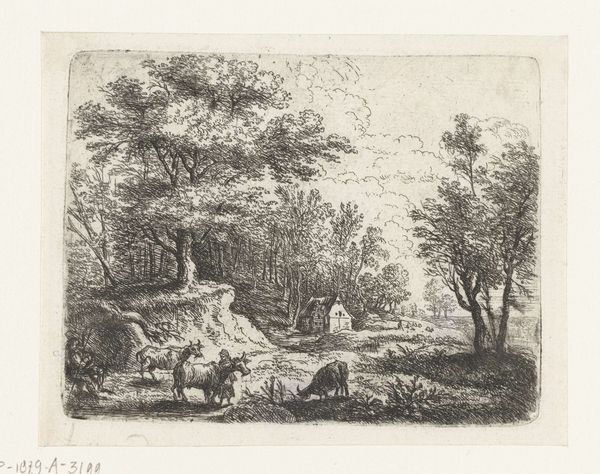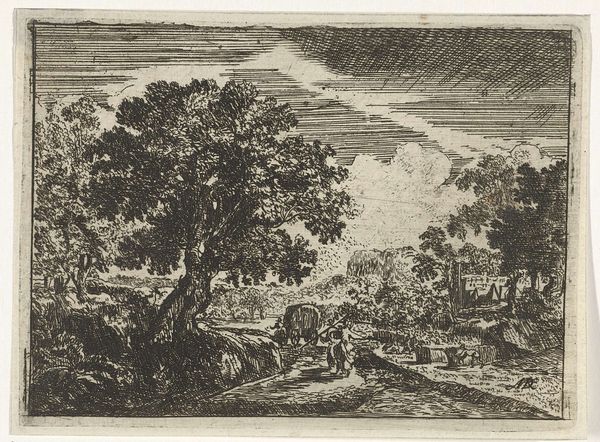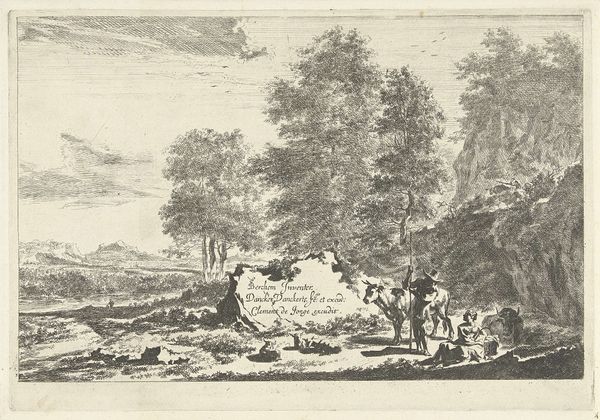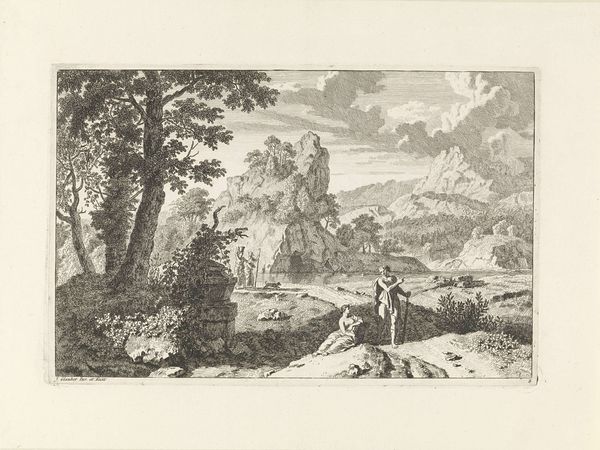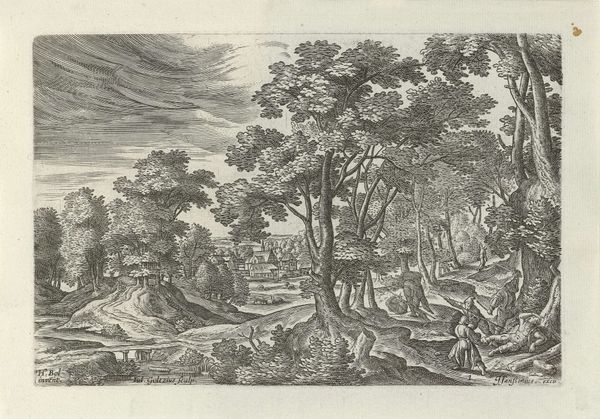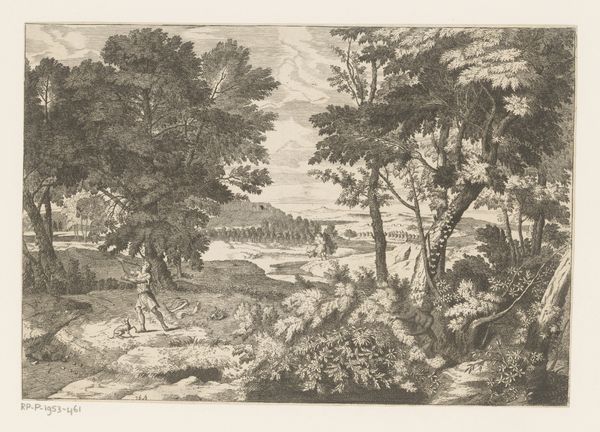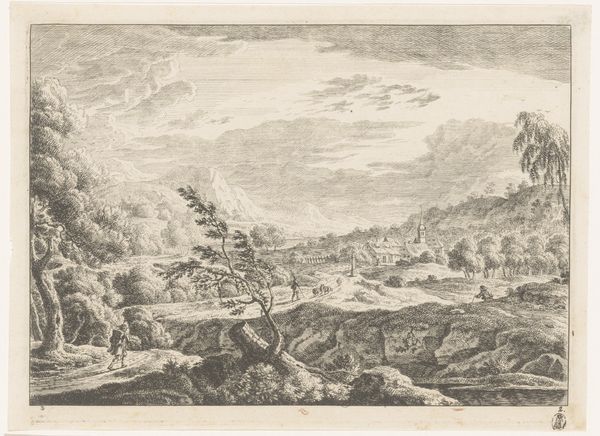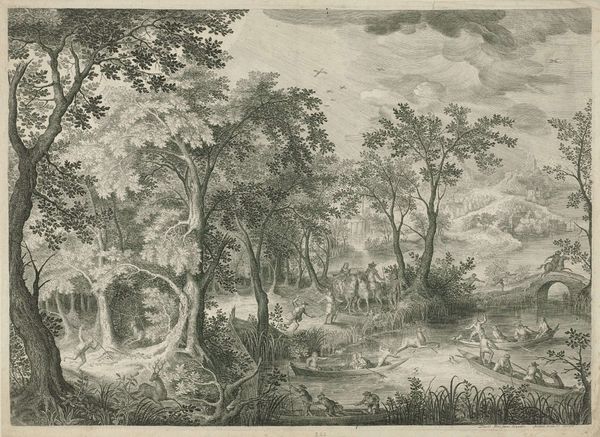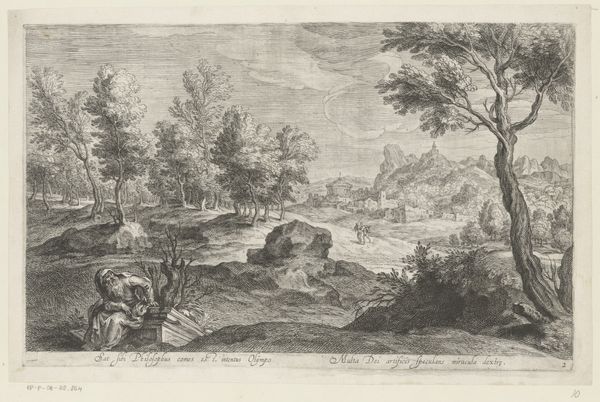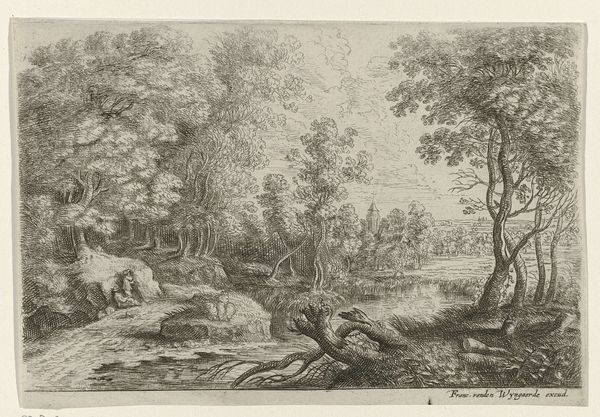
etching, engraving
#
baroque
#
etching
#
old engraving style
#
landscape
#
engraving
#
realism
Dimensions: height 95 mm, width 130 mm
Copyright: Rijks Museum: Open Domain
Editor: So, this is *Landschap met twee putti*, or Landscape with Two Putti, an etching by Lucas van Uden, created sometime between 1605 and 1673. It’s currently held at the Rijksmuseum. It has a whimsical mood, almost dreamlike... I wonder, what kind of context was Van Uden working in that might inform the way we see this work today? Curator: That’s a brilliant starting point! The Dutch Golden Age was wrestling with ideas about national identity, religious shifts, and burgeoning capitalism. Etchings like this became incredibly popular – affordable art for a rising middle class. What do you notice about how nature is represented here, and how does that contrast with the "putti"? Editor: Well, the landscape feels… wild, almost untamed. And then these little cherubic figures appear, looking kind of classical, which feels almost superimposed onto that landscape, right? It's interesting juxtaposed against a landscape meant for everyday people. Curator: Exactly! Consider this in relation to power dynamics. Landscapes weren't simply neutral depictions of nature. They symbolized ownership, control, and even a patriarchal claim over the land. How might the addition of these mythical, arguably colonialist, figures, these “putti”, further complicate this claim, obscuring who that "everyday people" consists of and even celebrates? Who is afforded leisurely pleasure, versus who makes possible its enjoyment? Editor: So, it's not just a pretty scene, but perhaps a commentary on how power and class interact with the environment and even mythical representation? Curator: Precisely. It challenges us to consider whose stories and experiences are being valued and amplified, and whose are being erased or minimized within this landscape. Editor: That really makes me rethink how I see the etching. It’s not just a simple landscape, but a reflection of complex social forces. Curator: Absolutely, it’s about uncovering those layers, sparking conversation, and challenging dominant narratives. This is an excellent entrypoint to recontextualize and create space for new stories to emerge within our understanding of art history.
Comments
No comments
Be the first to comment and join the conversation on the ultimate creative platform.
